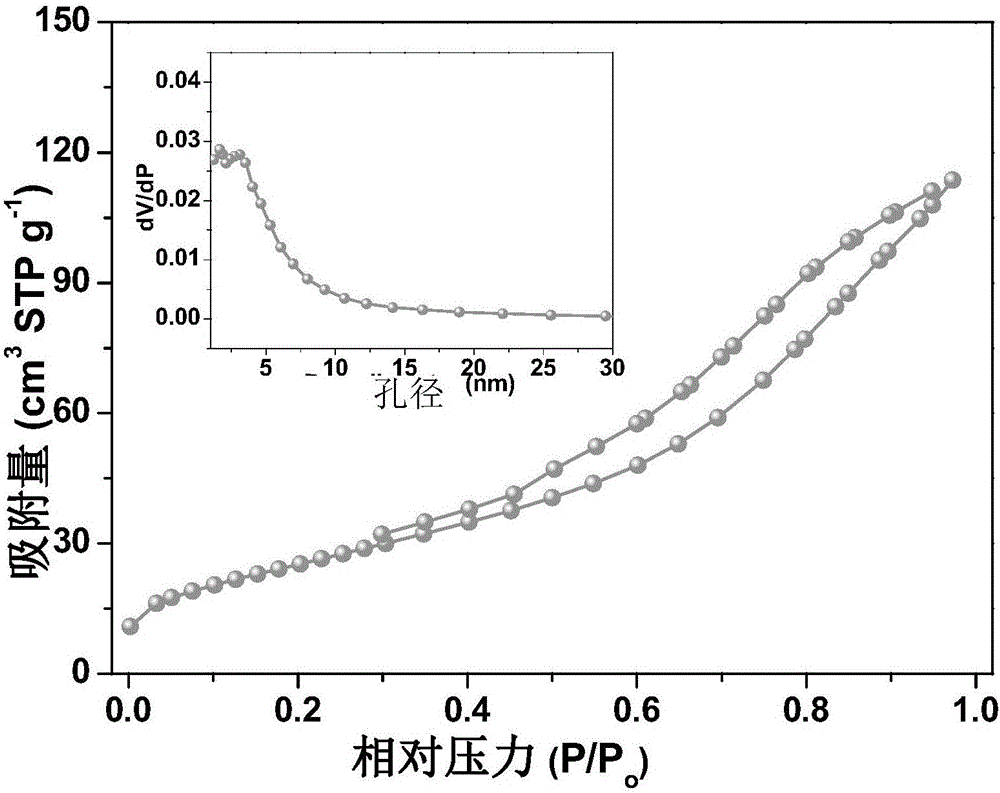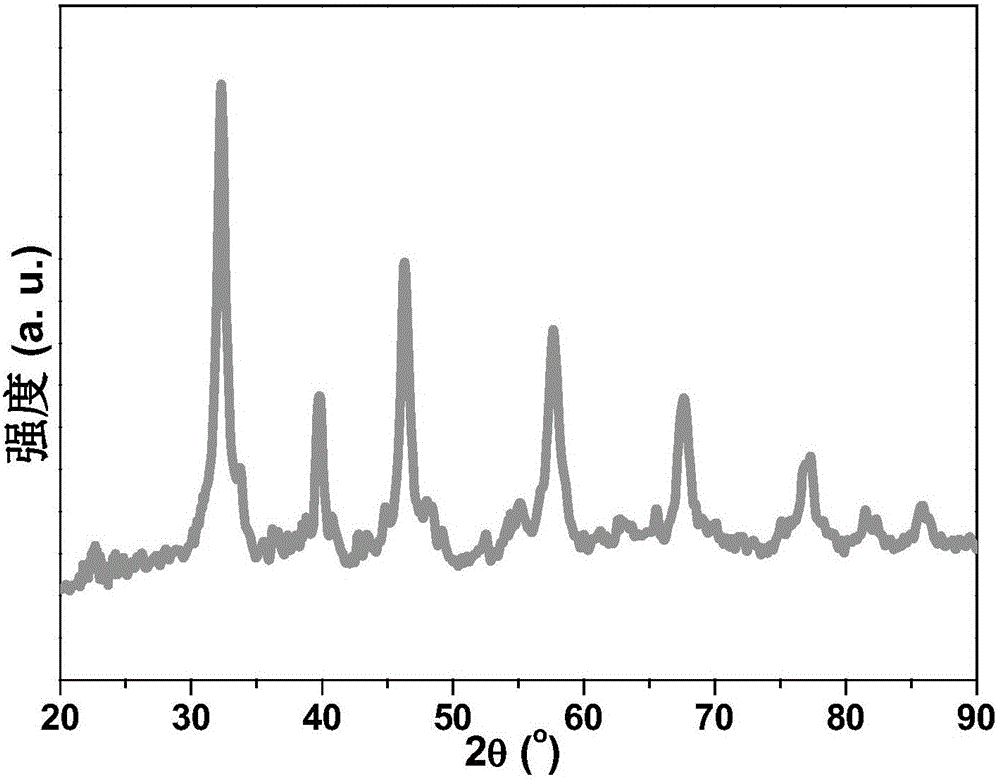Method for preparing ordered mesoporous strontium titanate
A strontium titanate and mesoporous technology, applied in the field of preparation of ordered mesoporous strontium titanate, can solve the problems of low specific surface area and the like
- Summary
- Abstract
- Description
- Claims
- Application Information
AI Technical Summary
Problems solved by technology
Method used
Image
Examples
preparation example Construction
[0020] The preparation method of the ordered mesoporous strontium titanate of the present invention comprises the following steps:
[0021] (1), dissolve the surfactant in absolute ethanol, stir to form a transparent solution; then dropwise add the ethanol solution of the phenolic resin, the amount of the phenolic resin corresponding to every 1g of the surfactant ranges from 1 to 1.5g, stir uniform, spare;
[0022] (2) Adjust the pH of absolute ethanol to <1 with HCl solution, then add tetra-n-butyl titanate and strontium acetate, and stir to obtain a solution; set aside;
[0023] (3), add the solution obtained in step (2) dropwise to the solution obtained in step (1), the amount of tetra-n-butyl titanate corresponding to 1g of surfactant is in the range of 1.5-2g, stir to make it Mix well to obtain an orange solution;
[0024] (4) Transfer the solution prepared in step (3) to a flat-bottomed container, conduct solvent evaporation at 25° C. to induce self-assembly for at lea...
Embodiment 1
[0033] (1) 1g polyoxyethylene / polyoxypropylene / polyoxyethylene amphiphilic block copolymer F127 (purchased from Sigma-Aldrich Company) and 1.25g phenolic resin ethanol solution (phenolic resin mass fraction 20%) were dissolved in 6ml In absolute ethanol, stir for 1 h to form a transparent solution A;
[0034] (2) Add 1ml of concentrated HCl solution (10mol / L) to 3ml of absolute ethanol, adjust the pH<1, then slowly add 1.7g of tetra-n-butyl titanate and 1.05g of strontium acetate, and magnetically stir to obtain a transparent solution B;
[0035] (3) Then add solution B to solution A dropwise, stir for 1 h to make it evenly mixed, thereby obtaining an orange-yellow solution;
[0036] (4) Transfer the orange-yellow solution to a flat-bottomed container, induce self-assembly by solvent evaporation at 25°C for 24h, and then thermally polymerize at 100°C for 12h to form an orange-yellow film;
[0037] (4) Put the orange-yellow film into a porcelain boat, heat-treat it in an atmo...
Embodiment 2
[0041] (1) 1g polyoxyethylene / polyoxypropylene / polyoxyethylene amphiphilic block copolymer F127 (purchased from Sigma-Aldrich Company) and 1g ethanol solution of phenolic resin (phenolic resin mass fraction 20%) were dissolved in 6ml without In water and ethanol, stir for 1 hour to form a transparent solution A;
[0042] (2) Add 1ml of concentrated HCl solution (10mol / L) to 3ml of absolute ethanol, adjust the pH<1, then slowly add 2g of tetra-n-butyl titanate and 1.24g of strontium acetate, and magnetically stir to obtain a transparent solution B ;
[0043] (3) Then add solution B to solution A dropwise, stir for 1 h to make it evenly mixed, thereby obtaining an orange-yellow solution;
[0044] (4) Transfer the orange-yellow solution to a flat-bottomed container, induce self-assembly by solvent evaporation at 25°C for 24h, and then thermally polymerize at 80°C for 24h to form an orange-yellow film;
[0045] (4) Put the orange-yellow film into a porcelain boat, heat-treat it in...
PUM
| Property | Measurement | Unit |
|---|---|---|
| Specific surface area | aaaaa | aaaaa |
| Pore volume | aaaaa | aaaaa |
| Average pore size | aaaaa | aaaaa |
Abstract
Description
Claims
Application Information
 Login to View More
Login to View More - R&D
- Intellectual Property
- Life Sciences
- Materials
- Tech Scout
- Unparalleled Data Quality
- Higher Quality Content
- 60% Fewer Hallucinations
Browse by: Latest US Patents, China's latest patents, Technical Efficacy Thesaurus, Application Domain, Technology Topic, Popular Technical Reports.
© 2025 PatSnap. All rights reserved.Legal|Privacy policy|Modern Slavery Act Transparency Statement|Sitemap|About US| Contact US: help@patsnap.com



